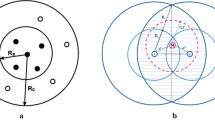Abstract
Wireless sensor networks are composed of large number of sensor nodes which cooperate for monitoring and gathering information about a given environment. These networks have many applications in monitoring and tracking fields. Target tracking is one of the most important applications of wireless sensor networks. Basically, target tracking protocols focus on Energy efficiency, maintenance of tracking accuracy and reducing the number of nodes involved in the tracking process with help of prediction mechanisms. Using accurate prediction mechanisms with low computational complexity has an important role in reducing energy consumption and maintaining tracking accuracy. In this paper, we propose a protocol called Auto-Regressive integrated Moving Average-based Distributed Predictive Tracking (ARIMA-DPT) which presents an accurate model for prediction of target next location using ARIMA time series. To evaluate the significance of presented prediction model, we use statistical tests. To show the accuracy of proposed prediction model we use NS2 simulator.







Similar content being viewed by others
References
Mukherjee, B., Ghosal, D., & Yick, J. (2008). Wireless sensor network survey. Computer Networks, 52(2), 2292–2330.
Su, W., Sankarasubramaniam, Y., Cayirci, E., & Akyildiz, I. F. (2002). Wireless sensor networks: A survey. Computer Networks, 38(4), 393–422.
Kumar, K. P., Rao, V. S., & Ramya, K. (2012). A survey on target tracking techniques in wireless sensor networks. International Journal of Computer Science & Engineering Survey (IJCSES), 3(4), 93–108.
Xu, J., & Bhatti, S. (2009). Survey of target tracking protocols using wireless sensor network. In Fifth international conference on wireless and mobile communications (ICWMC), Cannes, La Bocca, pp. 110–115.
Dehghan, M., Pedram, H., Hakami, V., & Naderan, M. (2012). Survey of mobile object tracking protocols in Wireless Sensor Networks: A network-centric perspective. International Journal of Ad Hoc and Ubiquitous Computing, 11(1), 34–63.
Yang, T. A., & Tran, S. P. M. (2006). OCO: Optimized communication & organization for target tracking in wireless sensor networks. In IEEE international conference on sensor networks, ubiquitous, and trustworthy computing, Taichung, pp. 428–435.
Winter, J., Lee, W. C., & Xu, Y. (2004). Prediction-based strategies for energy saving in object tracking sensor networks. In IEEE international conference on mobile data management (MDM’04), pp. 346–357.
Sikdar, B., & Yang, H. (2003). A protocol for tracking mobile targets using sensor networks. In Proceedings of the First IEEE international workshop on sensor network protocols and applications, Troy, pp. 71–81
Liu, Z., Guan, X., & Xue, L. (2011). Prediction-based protocol for mobile target tracking in wireless sensor networks. Journal of Systems Engineering and Electronics, 22(2), 347–352.
Chindris, M., Pop, G. V., & Bindiu, R. (2009). Day-ahead load forecasting using exponential smoothing. Scientific Bulletin of the Petru Maior University of Tirgu Mures, 6, 89–93.
Lou, W., Wang, Z., Ma, J., Chen, H., & Wang, Z. (2010). A novel mobility management scheme for target tracking in cluster-based sensor networks. Distributed Computing in Sensor Systems Lecture Notes in Computer Science, 6131, 172–186.
Lou, W., Wang, Z., Ma, J., Chen, H., & Wang, Z. (2013). A hybrid cluster-based target tracking protocol for wireless sensor networks. International Journal of Distributed Sensor Networks, 2013, 1–17.
Wang, Z., Chen, H. L., Li, J. F., Li, H. B., & Wang, Z. B. (2011). Demo: HierTrack—An energy efficient target tracking system for wireless sensor networks. In Proceedings of the 9th ACM conference on embedded networked sensor systems, pp. 377–378.
Wang, Z., Chen, H. L., Li, J. F., Li, H. B., Shen, J., & Wang, Z. B. (2013). HierTrack: An energy-efficient cluster-based target tracking system for wireless sensor networks. Journal of Zhejiang University-Science, 14(6), 395–406.
Bishop, G., & Welch, G. (1997). An introduction to the Kalman Filter (1997). Department of Computer Science University of North Carolina at Chapel Hill, pp. 1–16, September 1997.
Ns2 network simulator. http://www.isi.edu/nsnam/ns/
Tavildar, A., Khanna, R., & Karyakarte, M. (2013). Effect of mobility models on performance of mobile wireless sensor networks. International Journal of Computer Networking, 3(1), 137–148.
Author information
Authors and Affiliations
Corresponding author
Rights and permissions
About this article
Cite this article
Banaezadeh, F., Haghighat, A.T. Evaluation ARIMA Modeling-Based Target Tracking Scheme in Wireless Sensor Networks Using Statistical Tests. Wireless Pers Commun 84, 2913–2925 (2015). https://doi.org/10.1007/s11277-015-2772-9
Published:
Issue Date:
DOI: https://doi.org/10.1007/s11277-015-2772-9




